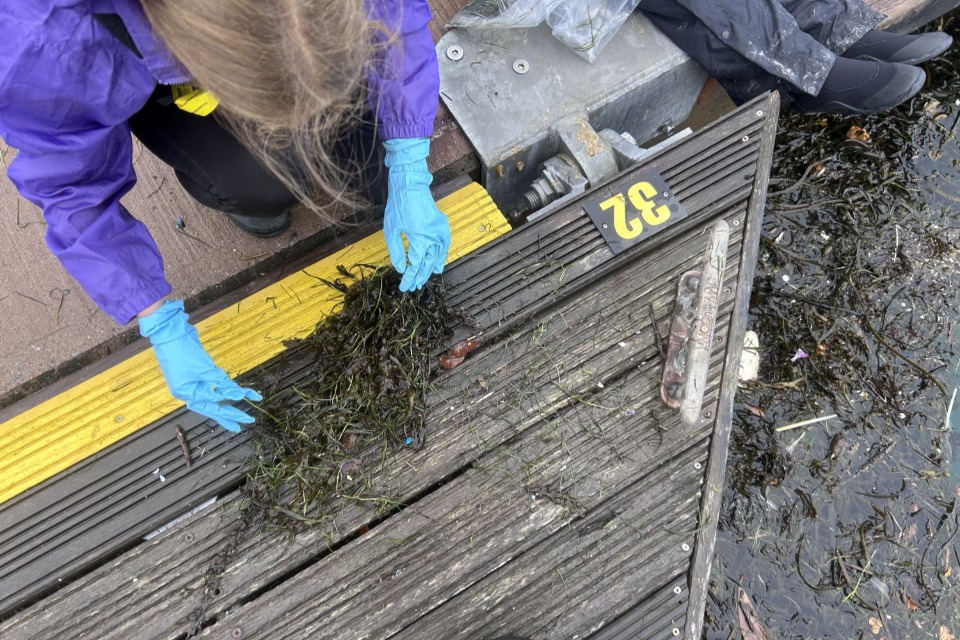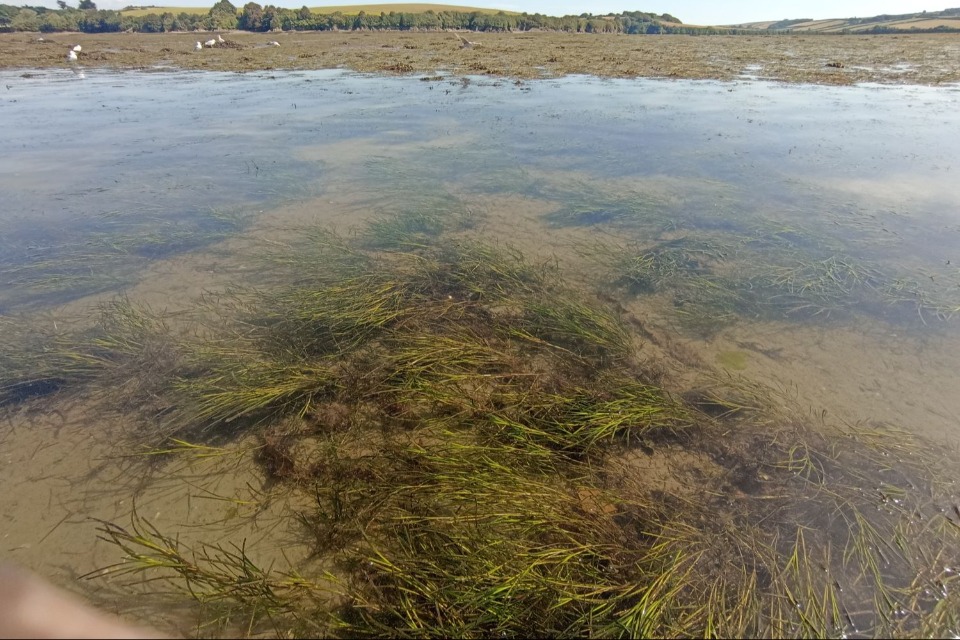The beginnings of a new seagrass meadow in the River Yealm have been planted thanks to volunteers largely from the Environment Agency.
A trial supported by the local community is harvesting rafts of dwarf seagrass adrift in the Kingsbridge and Tamar estuaries and replanting them at a new home on the River Yealm Estuary shoreline near Steer Point, Brixton.
Just over a dozen staff members and apprentices from the agency's monitoring team, local environmental staff and groups of volunteers have lent their time to support the cause. This involved selecting the best specimens to replant, cleaning them of any potential invasive species, then planting into shallow holes poked into the mudflats. The seagrass is then helped kept in place with a 'twig' peg, a thousand of which were crafted by local volunteers.

Dwarf seagrass which had become adrift is harvested ready for replanting
Paul Elsmere of the Environment Agency said:
Why clumps of dwarf seagrass naturally become free floating and adrift isn't known so gathering them up and replanting them in a new location is the ultimate form of recycling.
Seagrass ticks all the boxes: Biodiversity thrives on and in it, carbon gets captured and buried by it and it's even a natural flood defence barrier. We are excited to see how this meadow develops."
The trial was organised in collaboration with Nigel Mortimer from South Devon National Landscape Estuaries Partnership.
Estuaries officer Nigel Mortimer said:
Why plants of dwarf seagrass - complete with roots, leaves and seed head - naturally become free floating is not known. This phenomenon was first noticed in the past 10 years and may be linked to seed dispersal.
While other trials are in progress elsewhere involve the transplanting of seagrass and seed harvesting, this one wants to see if dwarf seagrass can take root over the winter to establish a new meadow or indeed disperse their seed to germinate locally.
The volunteers plan to return next year to add more seagrass to the growing meadow. In the meantime, local paddlers will be asked to keep an eye on the plants whenever they pass by.

How the seagrass meadow could look in over a year's time
As well as the help of volunteers doing the planting, the trial involves local authorities, landowners, harbour authorities, seagrass scientists, paddlers and even a local woodland group.
Everyone involved in the trial is grateful to local businesses and groups for their support, including Mayflower Marina for allowing access to their pontoons to collect the seagrass, local landowners and Brixton Camping Site.






